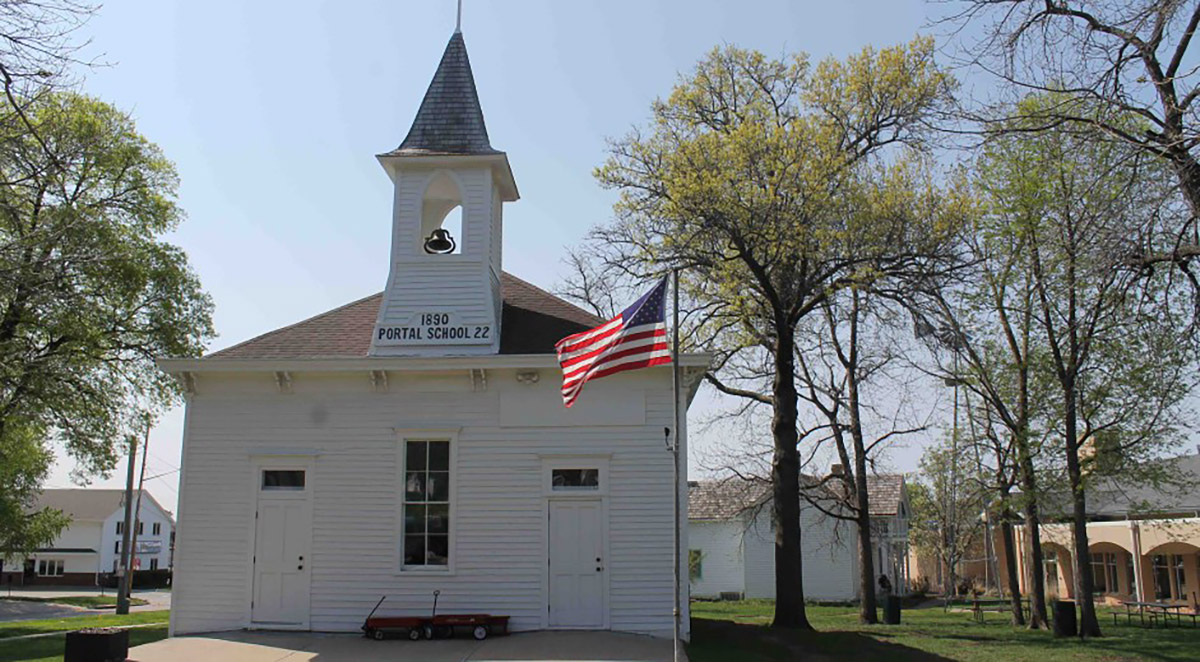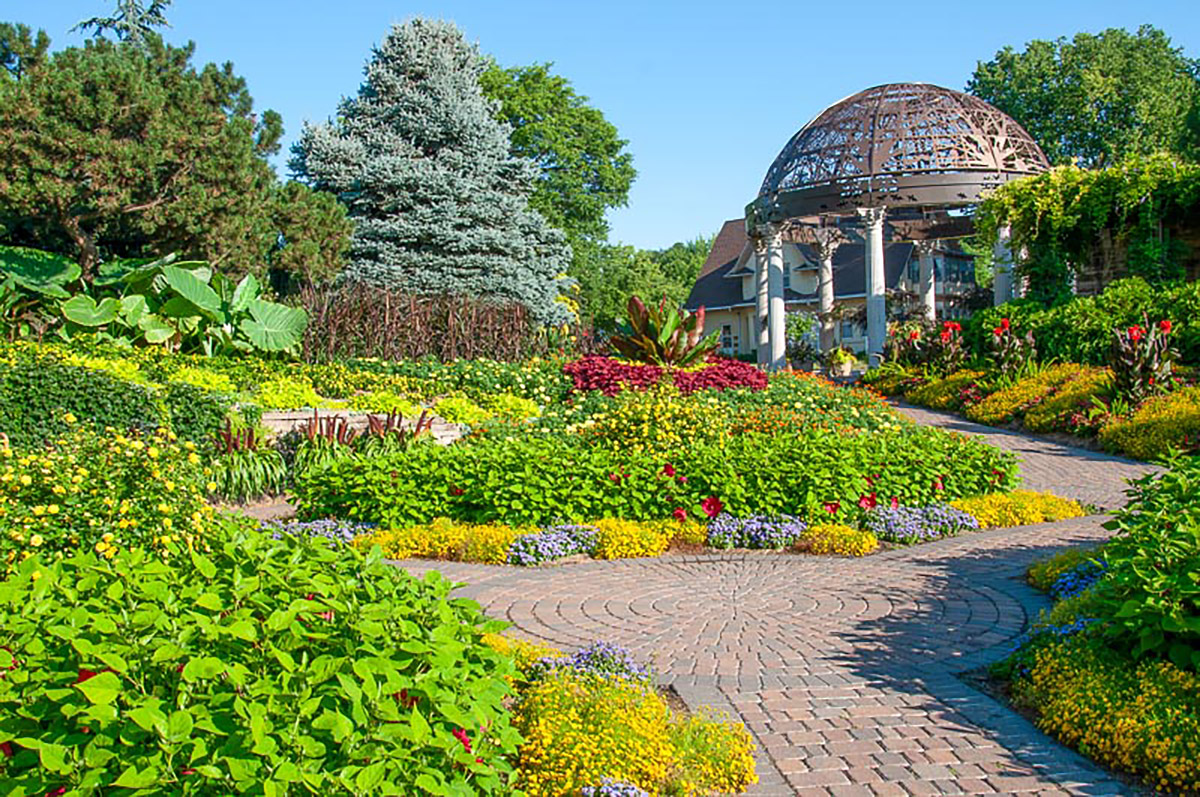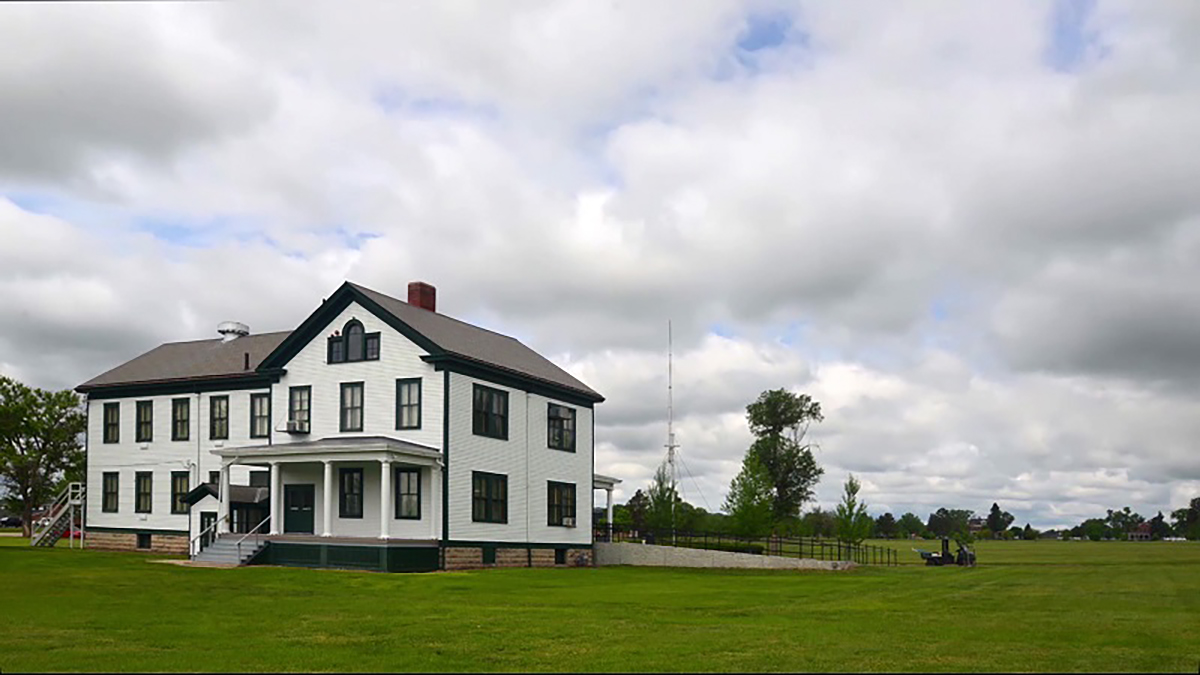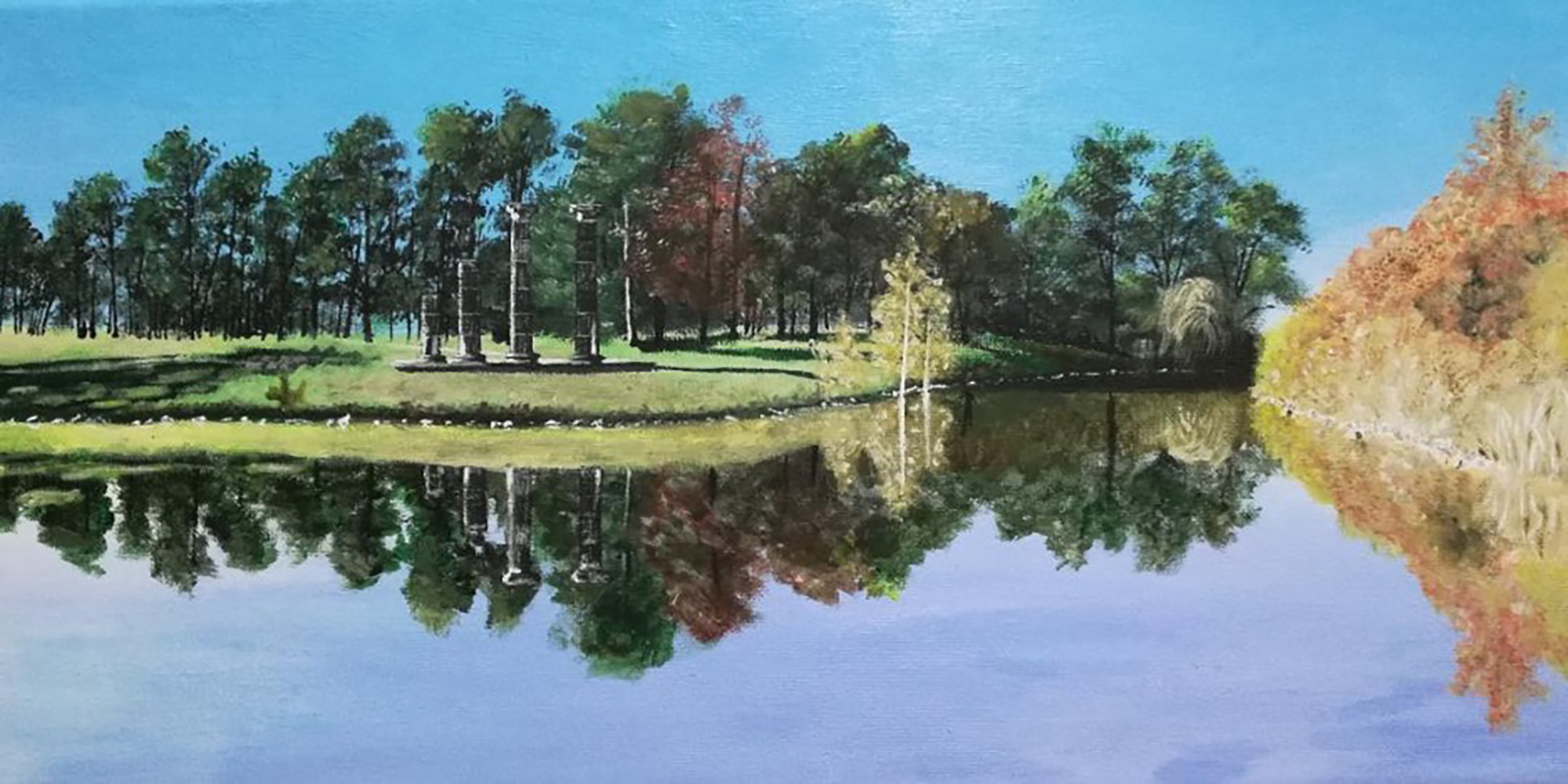
KEARNEY – A dozen high school students were recently recognized as winners of the third annual Nebraska Emerging Writers and Artists Contest.
The competition was created by the Phi Eta Sigma freshman honor society at the University of Nebraska at Kearney to promote literacy and creative activity among young people. It’s co-sponsored by the UNK Writing Center, American Democracy Project, Sigma Tau Delta English honor society, Phi Alpha Theta history honor society and UNK Art Society.
Open to any Nebraska high schooler, the contest called for submissions of essays, poems, short stories and artwork using this year’s theme, “Nebraska’s Untold Stories,” as inspiration.
Winners were selected through a blind review process by committees composed of UNK undergraduate students and led by Kenny Mitchell (poetry), Cassidy Johnson (short story), Delaney Tracy (essay) and Clarissa Paltz (art). The winning students are invited to share their work April 28 during the language and literature conference hosted by the UNK Department of English.
Poetry
First place ($100): Mary Beatty, Marian High School, “The School’s Portal”
Second place ($50): Madelyn McIntosh, Lincoln Northwest High School, “The Spring Creek Prairie”
Third place ($50): Angel Runyan, Blue Hill Community Schools, “Her and I”
Short story
First place ($100): Grace Langdon, Pius X High School, “The Garden of Hope”
Second place ($50): Layla Weedin, Marian High School, “On Their Wings”
Third place ($50): Maren Ferguson, Platteview High School, “The Springfield Fire of 1903”
Essay
First place ($100): Jacey Knapp, Grand Island Northwest, “History of Fort Robinson”
Second place ($50): Maeve Wharton, Marian High School, “The Untold Story of a Childhood in Nebraska”
Third place ($50): Annaliese Anderson, Grand Island Northwest, “POWs in Nebraska”
Art
First place ($100): Nicholas Li, Lincoln East High School, “The Columns”
Second place ($50): Carmen Curtis, Arts and Humanities Focus Program, “The Spirits on C Street”
Third place ($50): Lauren Hills, York High School, “Fatal Feathers”
First Place Poetry – “The School’s Portal” by Mary Beatty
This is a poem about the history of Portal Schoolhouse, a one-room schoolhouse built in 1890, currently located in Papillion, Nebraska. It is told through the perspective of the schoolhouse and tells some of the things the school has been through in the 130 years that it has been standing.

I was built in 1890
Originally in Portal
Moved because of flooding
Then there was a small quarrel
An infuriated teacher
Made a small mistake
Beheaded all her students
And threw them in a lake
Filled with much remorse
She locked herself inside
Took a hatchet to her head
And thus she slowly died
I was unused in 1913
94 and 95
Then purchased for a dollar
To keep my legacy alive
Moved once again
And for the final time
To my current home
In Papillion where I reside
Now I am the host
Of a new society
One that likes to boast
Of my ambiguity
Here I have sat
For nearly 30 years
Used as a tool
To teach others of my tears
So for those who doubt
My reliability or truth
I have witnessed it all
Through my long extensive youth
Though I may no longer be young
One thing remains the same
For 130 years I’ve clung
Through Nebraska’s wind and rain
First Place Short Story – “The Garden of Hope” by Grace Langdon

A man named Bair stood on the sidewalk beside the street. He was grinning ear to ear, which earned him some strange looks, to say the least. No one smiled during the Depression, and if they did, they did their best to hide it in solidarity with the rest of the world. What was it, then, that made this man stop in his tracks and feel unfettered joy amid the dark and gloomy town of Lincoln, Nebraska? A pile of garbage in a muddy dumping ground. Or rather, what it could become. When Bair saw this lot, all he could see was hope for the future, something the world had been starved of for far too long. And if the world was hungry for hope, by God, he’d feed it until it was well sated.
Meanwhile, a young man named Henry Goebel trudged down the gloomy street. He kept his head down low under the drizzling rain, long blonde hair casting shadows over his face. “Please, sir, stop!” He struggled to avoid the eyes of the mother calling to him from her parked car. “My children don’t deserve to live like this! We’re homeless, please!” She called as he walked by, her desperate pleas accentuated with the sobbing of a hungry child. Henry gritted his teeth, his eyes still fixed on the ground. Like I’ve got anything to give? The daily reminder of the state of the world was not enough to numb him to the pain the world was feeling, and he felt it with every fiber in his body.
A sudden collision took Henry from his thoughts and sent him flying to the ground, his briefcase opening and papers scattering everywhere, becoming damaged by the falling rain. Great, just what I needed. He bitterly swore under his breath as he stood up, shaking the dust from his clothes. “Sorry ‘bout that, young man!” A cheerful voice caused Henry to come out of himself and realize guiltily that he had bumped into an older man, causing him to fall to the ground as well.
Henry leaned over to help him to his feet apologetically. “No, sir, I should have watched where I was going…” Henry trailed off as his curiosity took hold of him. The older gentleman couldn’t have taken the fall very well, yet the man was beaming.
He chuckled good-naturedly. “No, no, what kind of moron stands in the middle of a walkway during rush hour, right? Here, let me help you-” The man stopped speaking so suddenly Henry thought he had gone mute. Bending over, he reverently picked up one of the papers that Henry had dropped. Finally, he spoke again in a hushed, solemn voice. “Son, these are blueprints…” He looked up at Henry, eyes wider than the moon. “Are you an architect?”
Henry shrugged awkwardly. “Um… Well, no, but my father is, and sometimes I help him with work. You might have heard of his company, it’s called Goebel’s.”
A smile took the odd man’s face again, and reaching out to shake Henry’s hand, he spoke with vigor. “Son, the name’s Ernest Bair, City Commissioner. I’d like to speak to you and your dad right away.” Henry’s mouth gaped open in shock. City Commissioner?! Nodding, he led the way. Now that he realized what an important figure he had been talking with, he treated him with the utmost respect that he could. But it was more than that which drove Henry to bring the stranger to his home. Something about the man’s passion he conducted himself with made Henry almost feel… hope?
Now Henry sat in the dimly lit dining room beside his father and across the table from Mr. Bair. The rain was still pounding upon the rooftops like a herd of horses galloping, giving the room a heavy and serious atmosphere. After the formalities of introduction, Mr. Bair with his ever-present smile glaring, spoke candidly of his vision. “There’s a dumping ground on the corner of 27th and D, full of garbage. The place does no one any good, other than the kids that go sledding there every winter. I expect to make this spot the most beautiful place in the city. The ground lends itself perfectly to the making of a sunken garden.”
Henry’s eyes shined as the man spoke. He eagerly looked to his father for approval. Mr. Goebel, at last, spoke. “A garden? You think a garden is going to change things? Mr. Bair, with all due respect, if you want to make a difference, I believe you must do so directly. Want me to design a soup kitchen, a homeless shelter? I’d be more than happy to serve my town in that way. But a garden? It’s a waste of money, waste of time.” The man leaned back, taking a sip of his coffee.
Bair was unphased, his gaze pinned squarely on Mr. Goebel. “We’ve already got those things, Freddy. This Depression has sucked the spirit, the joy, out of the people of Lincoln. What good can be done when everyone’s so damn depressed? I agree with you, the needs of the body have got to be met. But people are so quick to forget the needs of the soul.” Seeing Mr. Goebel was still hesitant, Mr. Bair spoke words that Henry wouldn’t forget for the rest of his life. “So, what do you say, Freddy? Why don’t we go give the people of Nebraska a reason to smile?” Henry felt chills down the back of his neck, suddenly filled with purpose.
Mr. Goebel, who was much less sentimental than the other two men in the room, glanced at his son before glaring at Bair, facing an internal struggle. At last, he made up his mind. “If we’re going to be working with each other, Mr. Bair, you must get one thing straight. It’s Mr. Goebel. Or Fred. Not Freddy.”
Mr. Bair laughed heartily, shaking Mr. Goebel’s hand. “Sure, Freddy, sure! Now let’s get to work, there’s no time to waste!”
Over the next several months, all three men worked tirelessly to build the garden. Mr. Goebel, being the more experienced architect, took charge of the blueprints. Henry helped where he was allowed, feeling a sense of pride when his father accepted his unconventional idea of reflection pools, praising him for the idea that was entirely unheard of at the time. Mr. Bair, meanwhile, was busy finding workers, which wasn’t so difficult in the midst of the Depression. The kindhearted man hired nearly everyone who approached him, prioritizing family men who had become unemployed due to the state of the economy. He’d end up providing a steady income to over 200 men in total who labored to work on the garden, changing the lives of every single one and his family. Finally, the garden was ready to be built.
At first, progress was steady, with Mr. Bair watching over the workers firsthand. Henry followed along, wanting every chance he could get to work with Mr. Bair, who had become something of a mentor to him. Mr. Goebel would stop by routinely to see how progress was coming, as well as to work with Bair, though he’d never admit it. He had begun to respect the man and became rather good friends with him. Every now and then they’d sneak off to the Speakeasy after a long day of work, drinking merrily together. Things were beginning to look hopeful again.
That was when the Dust Storm hit. It destroyed nearly all the progress they had made with the garden and brought a terrible drought to the region to boot. The conditions became worse, every day the men labored in the harsh conditions. Many quit the project entirely, losing all enthusiasm they had once had. But Bair stayed optimistic through the entire ordeal. Even on the days he was the only man to come to work, he stayed well past dark, Henry close behind. But the workers always returned, and Bair welcomed them warmly. Little by little, their progress was recovered.
The garden was completed in the Spring of 1931 and named the Sunken Gardens. The final day of work, tears were shed, songs were sung, and hope was found for every man that had worked hard to bring life to the once rejected soil. The crew partied for hours in the finished garden. One worker brought his daughter who was no higher Bair’s knee. The men recognized her, as she had watched the production of the garden every day from her window, smiling and waving to the working men. She approached Mr. Bair, a shy expression on her little face. “Mr. Bair, thank you for building the garden. It’s the most beautiful thing in the world.”
Bair responded with a kind smile, kneeling to look her in the eye. Picking a nearby daisy, he held it up to her. “Why, thank you, little lady. We built it just for you.” A smile spread across her rosy cheeks. He placed the flower in her hair, and she skipped back to her father, suddenly shy of the kind man.
One by one, the men said their goodbyes and returned home, until only Mr. Bair, Mr. Goebel, and Henry remained, sitting together on the stone wall, silently gazing upon the garden. It had developed a life of its own through the many creatures that now inhabited it. They reverently watched as the koi fish swam carelessly through the reflection ponds. A gentle gust of wind brushed through the vibrant flower beds, carrying the peaceful song of crickets through the sweetened air. The sun barely clung to the horizon, casting long shadows over the garden. The glow of dusk reflected off the bronze statues, setting them ablaze. It was the most beautiful sight Henry had ever seen in his life, and it was one he had given life to. He closed his eyes, cherishing the moment alongside his father and mentor.
Mr. Bair spoke to break the silence, and would you believe that he did it with a grin? “Freddy, Henry, I’ve always believed that it’s impossible to change the world. Whatever you do, there’ll still be so much evil out there it’s almost like you did nothing at all. But it is possible, and this I know for a fact, to change your own world. You can change the world for a select few. And I believe that’s what we’ve done today. We’ve changed the world for the people of Nebraska, and that’s something to be damn well proud of!” Henry beamed with pride. They had changed their own corner of the world, and that was enough for a lifetime.
“Mr. Goebel?”
A voice took Henry out of his memories. Begrudgingly, he pried his eyes open to the reality that now stood before him. It had been years since the garden was completed, and both his father and Mr. Bair had passed away long ago. The arthritic pains caused by his place on the stone wall reminded him that he too was getting on in years. It was the very same place he had sat so long ago, when he had watched the serene garden. He looked around the garden as it was now, without the glow of nostalgia. Much of the vegetation was dying and the stone floors were caked in mud. The statues had been damaged and repaired so many times that the scars left behind were visible, and the ponds he had taken such pride in were filled unevenly, abandoned and uncared for. The garden had been damaged by flooding in recent years, and visitors grew scarcer by the day. It was hardly recognizable, and it made Henry sick to look at.
He breathed in deeply, turning to the man that sat beside him on the bench. “I’m sorry, could you say that again?”
The younger man smiled patiently, repeating his question. “I asked what you thought about renovating the garden. I realize it must hold so many memories for you, and it can’t be easy to see it change, but-”
Henry interrupted him with a hearty laugh, relieved of his fear that the city wanted to demolish his precious garden. When met with the confused expression of the younger man, he answered him happily. “Well, what’s the alternative, a hole in the ground?”
“I’m not sure what you mean, sir?”
Henry looked around the garden again. “We didn’t build it just to let it die, son. Whatever it takes to keep the garden alive has got to be done. Our intention was not to create our own legacies, we just wanted to see the world smile again.” Smiling to himself, he paused. “Our world, at least.” Turning back to the young man, he continued. “I think my old man and Mr. Bair would agree. If renovating can keep people smiling all these years later, that’s the best thing that could happen.”
A year later, Henry Goebel passed away before the renovations could be completed. But, having given his blessing, the city pushed on in his memory. The garden, now known as the Sunken Gardens of Lincoln, Nebraska, stands proudly on the corner of 27th and D streets. Today, it is beloved and well cared for by volunteers in the community yearly, who come together to remember the story of hope that Ernest Bair had created for the people of Nebraska long ago. They come to reconnect with each other, to keep the town beautiful, and more than anything else, to smile.
First Place Essay – “History of Fort Robinson” by Jacey Knapp

Ever since the United States became its own nation in 1776, a bountiful quantity of military forts and encampments have been scattered from coast to coast. No matter the locations of the forts, their uses were seen on a significantly wide scale. Some of these forts were used as military bases or defenders of a city, while others were used for imprisonment and control. Near the heart of the United States, the location of one of the most well-preserved World War II German Prisoner of War Camps in the United States can be found: Fort Robinson.
Fort Robinson, then named Camp Robinson and previously Camp Red Cloud Agency, was established and put into use in March 1874. The camp was named in honor of US Lieutenant Levi Robinson, who was murdered by malicious Red Cloud Agency Indians just a month before the camp’s formation. After this fearsome act by nearby hostile Indians, men from Fort Laramie ventured out near the Red Cloud Agency, where the men camped out to protect the agency from similar hostile Indians. After all, this agency was in charge of providing necessities and rations to thousands of Cheyenne, Sioux, and Arapahoe Native Americans (Fort Robinson, Nebraska). This campout was called Camp Red Cloud Agency. Just weeks later, it was renamed Camp Robinson. The camp did not receive its current name, Fort Robinson, until December 1878.
Within the approximate four-year time frame of the camp’s opening and the renaming to Fort Robinson, the post had seen its share of Nebraska’s history with Native Americans. Most notably, Fort Robinson is known for being the death site of the Oglala Lakota Chief: Crazy Horse. After leaving the camp without permission, Crazy Horse would have been arrested and imprisoned at Camp Robinson (Biographies of Plains Indians). Instead, he resisted arrest and was stabbed to death on the night of September 5th, 1877, on camp premises.
Flashforward one month after Camp Robinson became a permanent military fort, now January 1879, Cheyenne captives held at the US Army fort attempted to escape for South Dakota. The Cheyenne group accounted for 149 captives, including men, women, and children. After the Cheyenne were ordered to leave and move back to Indian territory in the south, the leader of the captive Cheyenne group, Dull Knife, refused for himself and for his people to leave. Still being at Fort Robinson after the refusal, their rations diminished, their tasks became bitter, and their freedoms became restricted. In rebellion, the Cheyenne escaped the camp on the frigid, snowy night of January 9th, 1879 (Robinson). The US Army pursued the nearly 150 Cheyenne escapees and recaptured almost seventy of them. The rest were killed or wounded in what is known as the Fort Robinson massacre.
In the late 1880s, the Fremont, Elkhorn, and Missouri Valley Railroad extended through Fort Robinson. This allowed for beneficial transportation of army soldiers to wherever they were needed. Soon enough, a constructive decision was made to expand the army post (Fort Robinson Timeline). This expansion created more space for general development so the base could become more of a military advantage on the Plains.
What were known as the Buffalo Soldiers, or the Ninth and Tenth Cavalry Regiments, were stationed at Fort Robinson. In fact, for more than two decades in the late 1800s, African Americans comprised the majority of the troops stationed at Fort Robinson (Brief History of Fort Robinson). At the beginning of the 20th century, the fort became the headquarters of several more cavalry units, including the addition of the eighth and twelfth regiments.
Years later, now 1919, Fort Robinson’s main use subtly shifted from being a primary military base to being used as a remount depot. The fort was used to train and breed horses and mules to be used by the US Army (Brief History of Fort Robinson). At this point, the fort served as the largest and most prominent quartermaster remount depot in the world, training tens of thousands of horses and mules combined by the end of World War II.
Other than serving a purpose for horse training, the fort also served as a dog training post during the Second World War. Accounting for a cumulative 5,000 dogs trained there during the war, the fort took credit for training almost half of the K-9s that were being used by the US Army at the time (National Archives). Most of the dogs trained at the fort were donated pets from families who wanted to play a generous and supportive role during World War II.
At the same time, the fort held a 3,000 prisoner capacity for German Prisoners of War (POWs). The first Germans, both Nazis and conscripts, arrived at Fort Robinson in November 1943. 160 buildings were used to house the 3,000 prisoners, and capacity was reached after the Normandy Landings in June 1944. The POWs had various distinct roles at the fort. Some prisoners helped with the regular upkeep of the fort, some worked on neighboring farms and ranches, and some helped take care of the remount animals. As ordered by the Geneva Convention, the prisoners earned a small payment from their labor. While the POWs were not working, they watched movies, performed plays in the theater, and played traditional American games like soccer (Lefevers). In other words, the goal was to mold the Germans into more of an “”American”” lifestyle.
After World War II ended, Fort Robinson was deserted by the United States Army in 1947 and officially gained new ownership from the United States Department of Agriculture (USDA) on April 29th, 1948. The fort was then newly used as a beef research station for the USDA and ceased to exist as a military fort (National Archives). Research on beef production and cattle breeding was conducted at the former army base until 1971.
During the years the beef research station was still open, the first museum at Fort Robinson opened on June 3rd, 1956 (Fort Robinson Timeline). The same year, it became the main sight of the official Fort Robinson State Park, the largest state park in Nebraska. In 1972, after the beef research station closed, the state park expanded and reached its final and current 22,000-acre magnitude.
Throughout the past century and a half, Fort Robinson has built a rich and distinctive history in the state of Nebraska. From being the death site of Crazy Horse to being a World War II German Prisoner of War Camp, the renowned and historic fort has earned itself a reputation that makes Nebraska’s history just that much more intriguing.
First Place Art – “The Columns” by Nicholas Li
Four mysterious sandstone pillars sit in Pioneers Park in Lincoln. There is a story behind the columns in Nebraska. Did you know the story? Let’s find it out.
